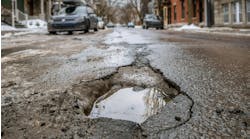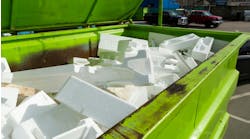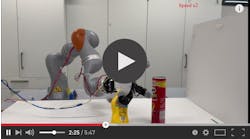In just about any industry, the easy road is always niche expertise. Pick a particular industry, a specific application, a narrow customer base, master that niche and serve your clients better than anyone else possibly could.
Spraying Systems Co. did not take that easy road. If anything, it went exactly the other way.
The company's tank cleaning line covers the broadest range of industries imaginable, running the gamut from food and beverage processing to chemical, paper, pulp, and even steel.
In other words, it is about as far from a niche market as a company can get.
If there is a tank that needs cleaning, Spraying Systems Co. is pretty sure they have the right system for it.
Of course, it seems impossible to effectively match such a broad industry reach with such narrow market expertise. But looking over the company's product range, the customization options it presents, and its extensive service network, it seems like Spraying Systems Co. may have discovered a way to engineer the impossible.
Recently, NED met up with Marty Heyen, Business Development Director, Industrial Division, from Spraying Systems Co. to learn a little more about the engineering and service strategies that enabled this feat.
NED: Let's cover the bases. Across all of the markets you serve, what do they have in common? What do they want out of a tank cleaning system?
HEYEN: They all want to clean their tanks, to get them clean as quickly as possible and as consistently as possible.
Everyone wants to have less downtime; they want to reduce labor costs; they want to ensure worker safety; they want to improve their sustainability programs. Automated tank cleaning and our TankJet® product line addresses all of those issues, which are kind of hot buttons right now for processors.
NED: Now, what makes them unique? How do you go about choosing the right system to accomplish these goals for such a diversity of industries?
HEYEN: When we're looking at designing a product for a particular market, obviously the first thing we're looking at is size of tanks. Then, we look to see if anything is located inside the tank like baffles or any agitation equipment. That has a large impact on the type of products that we're designing for those markets.
In addition, we have to check out the types of products that they want to clean inside those tanks.
As you can imagine, it's a lot more challenging to clean something off the sides of the tank that is the consistency of peanut butter versus something that is the consistency of milk.
So the type of product that you design for those types of applications can vary widely.
NED: So how do you accomplish that? It seems like it would require you to customize a system for every new customer.
HEYEN: To some extent yes, but you have to keep in mind that we can't customize every particular product for every particular situation to the nth degree. That's just not cost effective.
So we have to have some of what I would call standard based products. However, we have the flexibility to optimize and customize those standard products for a given customer's application.
For example, we probably have 20-30 different models of TankJet® tank cleaners for different sized vessels, all of them operating at different pressures. Each one of those can be customized to a certain degree, depending on what nozzle you put on the tank cleaner.
After that, it takes an experienced sales engineer to direct the customer to the right product for that application. It's something we feel we have a great competitive advantage to serve the customer better because we've got guys in the field who have been doing this for many years and understand both our equipment and, more importantly, the customers' application.
They've been in food processing plants; they've been in chemical processing plants; they've been to over the road tanker cleaning facilities. They know these applications.
NED: So it's a combination of technical expertise and a broad product line?
HEYEN: That's right.
We also have what we call a tank audit. We do some promotion to our customers in different industries and recommend they give us a call for an audit of their tank cleaning process to understand if what they're doing is correct or if there is a better solution. This audit that we provide is free of charge.
Also, depending on what product we're looking at, we do some tank cleaning trials. We will offer up a solution to a particular customer and let them trial a product to make sure that it will work for their particular application before they actually purchase it.
NED: So you spend a lot of time ensuring that customers get the right system for the right job. Could you describe what such a customized solution offers to a client over, say, a generic system?
HEYEN: The thing that escapes people a lot of times is the fact that a tank is a part of a production or a processing system. It seems kind of passive, but if a tank is empty so it can be cleaned, it's down. It's not making you money. It's not doing whatever you intend for it to do.
In the case of an over the road tanker truck, it can't carry the next load. In the case of a dairy, it can't process the next batch of dairy products. Or for a paint manufacturer, switching colors, there's downtime. Downtime is never a good thing. The more we can eliminate that and make processes more efficient, the better off our customer is.
And in the end, these systems just provide much more consistent results and, in addition, they help to eliminate contamination if you're going from one batch of product being mixed in the tank to another batch of product for that particular customer.
Better results, achieved more efficiently.
Furthermore, on the sustainability side of things, using these types of products we can manage the amount of water that is used during the tank cleaning process and in some cases can reduce it significantly compared to what they were doing before. So there are additional savings and benefits to using this type of tank cleaning equipment.
We used to use the phrase around here, it was a tagline for our company many years ago: Saving you time, money and energy.
That still applies to tank cleaning very accurately.









